|
Zulu Nyala, South Africa
Monday Morning, September 11
During our morning ride, we saw lots of interesting birds. Even when we're not finding the "Big Five," and this is our sixth day of doing this, Marius still finds interesting things to show us. This green spotted woodland dove was tricky to photograph with the strong backlight.
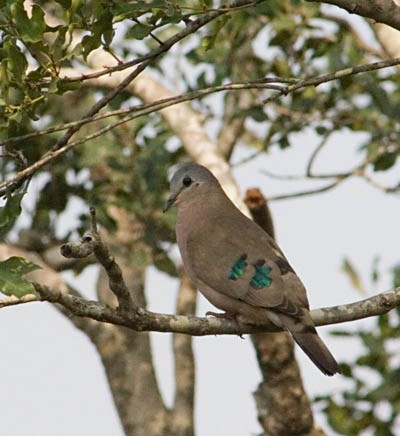
On the way down to the watering hole, we chanced upon this adult male nyala who stood still long enough for us to snap a few photos. He even took a break from the breakfast buffet to give us a nice portrait. Look at those antlers!
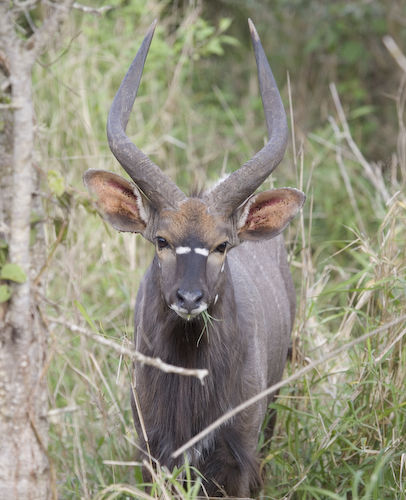
The juvenile warthog below shows a little trickery built into the species. The young ones have white whiskers along their jaws, which look like tusks to the casual predator, maybe giving them a bit more of a chance to live long enough to develop actual tusks.
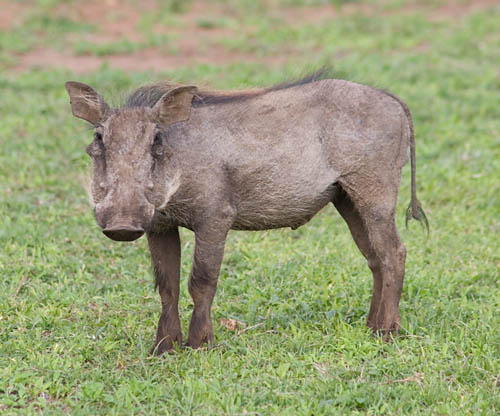
The warthogs like to bend down and root through the grass on their knees.
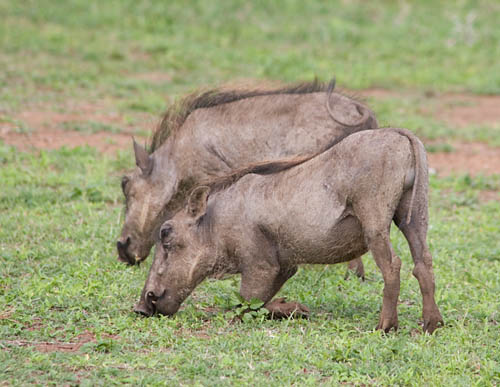
At the watering hole, we caught a bunch of birds out for their morning constitutional. Here we have a gray heron and a yellow bill stork.
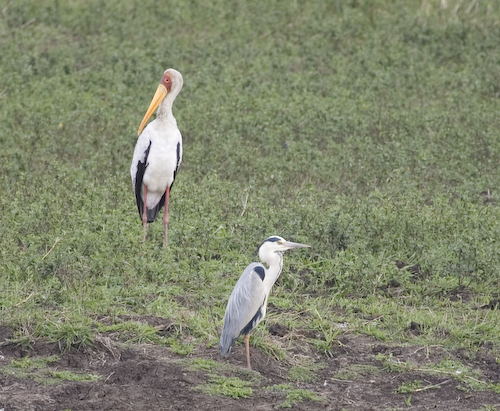
This is the wattled plover. Just look at that wattle!
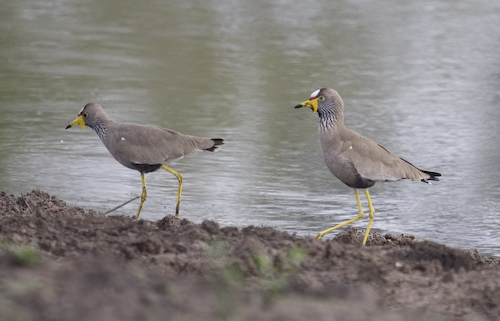
This pair of Egyptian geese were regular sights near the water.
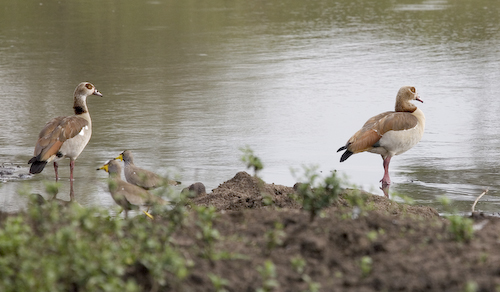
Here's the aptly-named hammerhead.
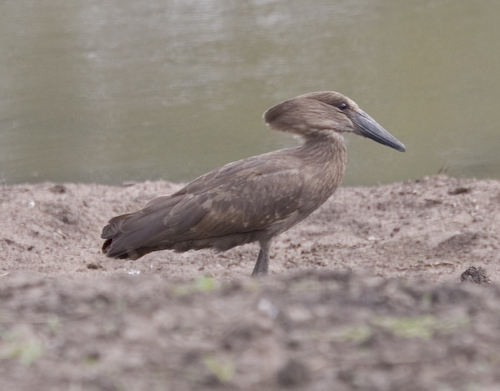
Back up in a more wooded area, we found this ibis pair hanging out, enjoying the morning and grooming each other.
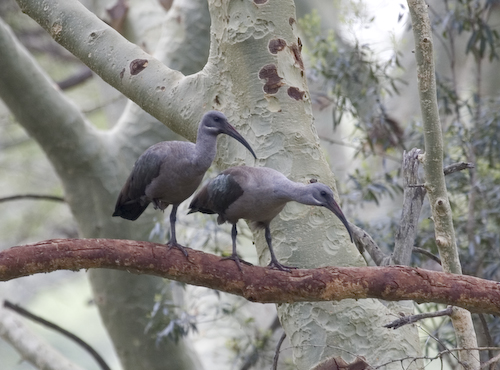
You may recognize the three amigos here -- this is the image we picked to represent the Africa adventure on our index page.
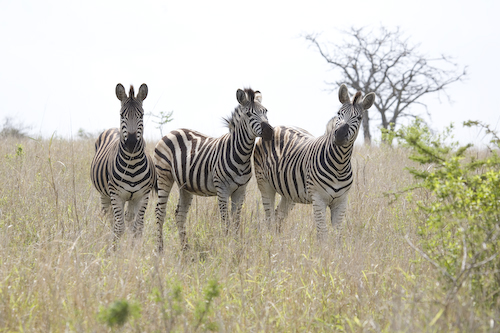
Finally, we got a really great look at the elusive kudu. This group took their time crossing the road so we could get a good look and take some pictures. These females have avian passengers that get a free ride, and a free lunch.
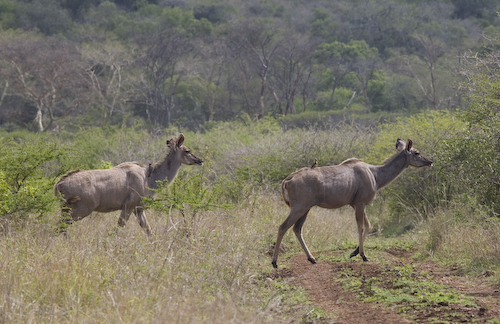
Here's a close-up of another female kudu, also with a passenger.
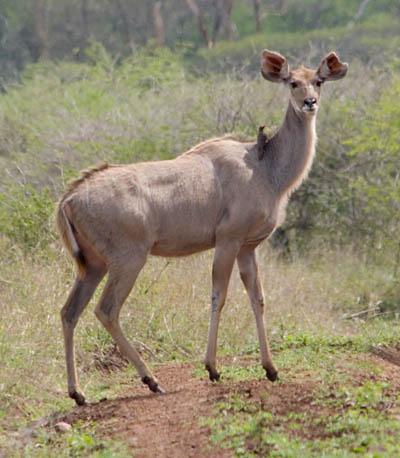
Here's a male kudu. This one shows the characteric strips (very similar to the nyala) and also the short, sharp, antlers.
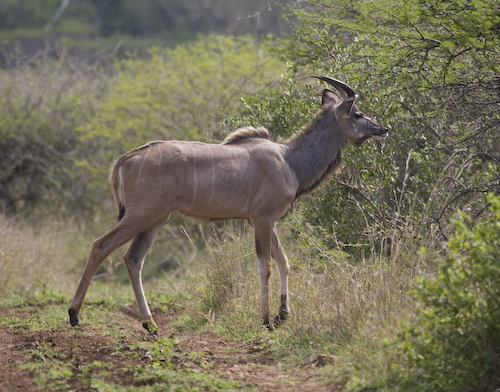
Marius stopped to show us the tree where he and a friend were able to see a leopard. They spotted signs of the local leopard in the area, so they tied some bait up at the base of the tree and then camped out and watched him come get it at night. Marius climbed up into the tree to show us how the leopard was perched.
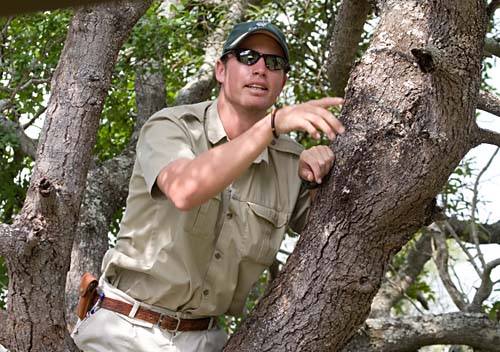
This is a colony spider nest in one of those thorny trees.
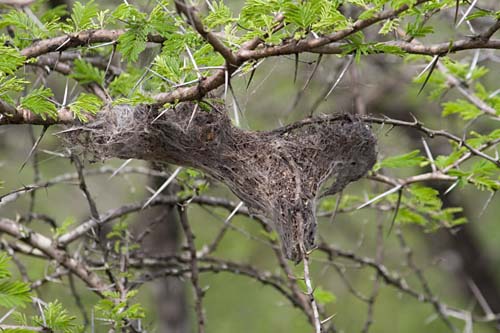
This step eagle sat on a tree branch and watched us for a while, then took off give us a dramatic wingspan view.
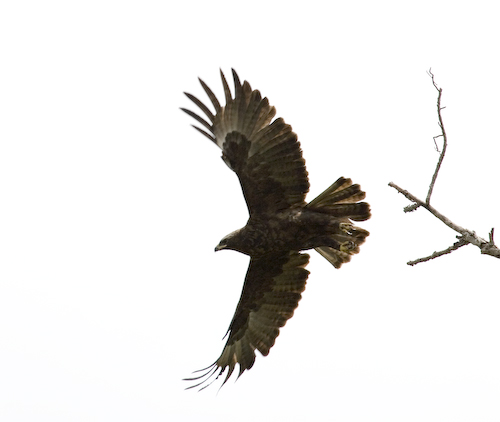
This nyala demonstrated the camoflage value of the thin white vertical stripes, the horns also blend in well with the larger branches.
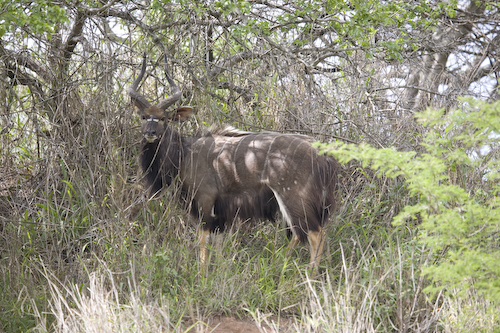
Here's the view from a hilltop near the lodge.
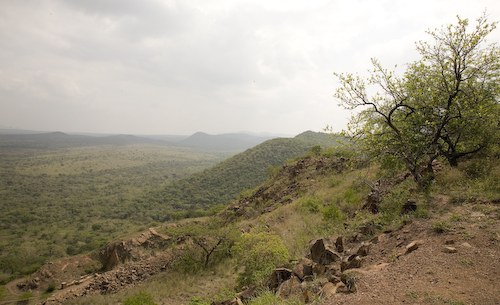
Marius spotted this cool little tree nagana hanging out on a stump.
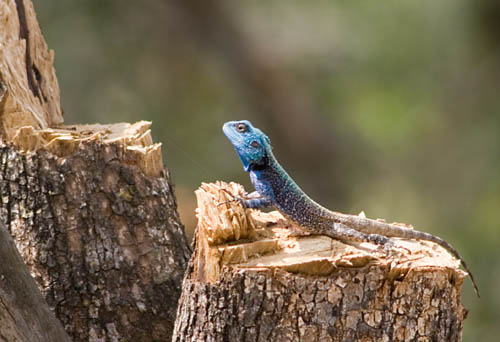
Lower on the same stump was a common skink.
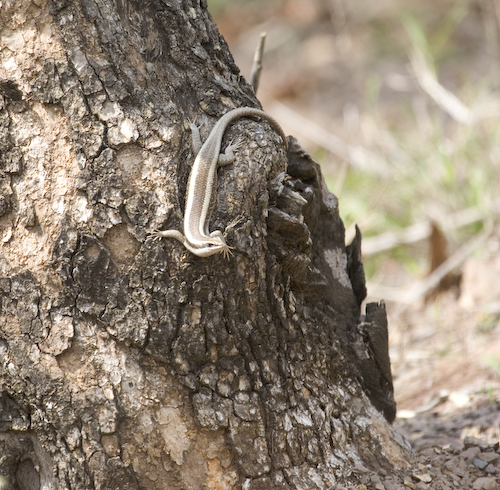
Monday Lunch, September 11
When we got back to the lodge at the end of the morning drive, we found more fun animals just wandering the grounds. There was another tree nagana playing king of the wall with another less colorful lizard.
A more frequent sight around the lodge is the rainbow skink, a more colorful version of the common skink pictured above.
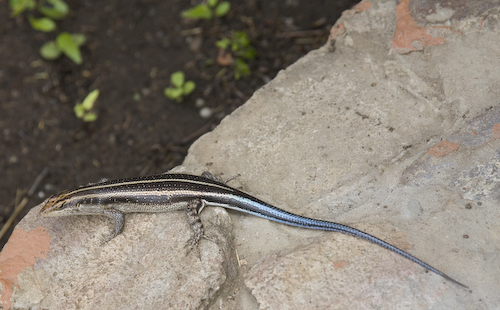
Back near our room, we were amazed to see a tribe of vervet monkeys hanging out in the trees bordering the outer walkway to our room. They are normally pretty skittish and run off as soon as they see us out in the bush, but here they must be more used to seeing humans wandering around and not trying to eat them.
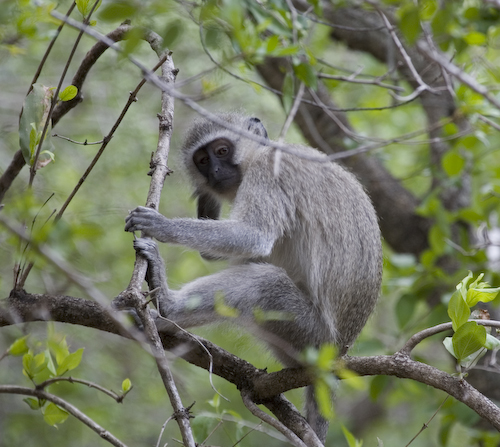
In fact, they were having some success insinuating themselves into the hotel food chain by raiding snacks that were apparently left unguarded on the patio outside one of the upper level rooms. This one got his little opposable thumbs onto what looks like a bag of cookies.
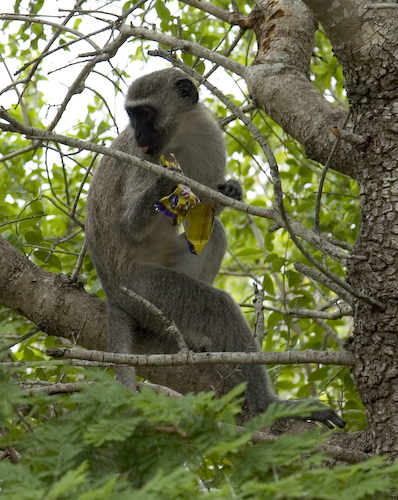
This young one is awfully cute munching on his share of the cookie take.
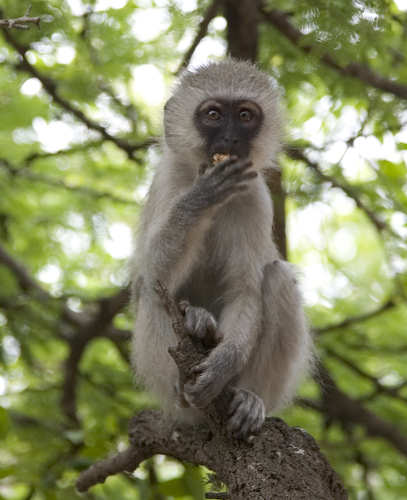
Of course this stops being cute when someone, perhaps a juvenile homo sapiens, gets between a wild animal and a cookie and gets bitten. It's also not good for the animals to get used to eating human junk food and lose their interest in their normal healthy diet. One way or another, the animals lose when people let this sort of thing happen. The folks at the lodge and most of the tourists have more sense than to intentionally feed the monkeys. Hopefully this was just an accident.
This young male nyala was also wandering the area. He seemed to be fairly fearless as I inched closer for a good shot.
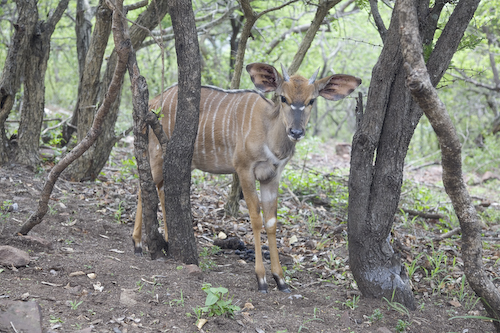
Those horns look sort of nasty up close. I was trying not to spook him, but I about jumped out of my skin when he starting talking to me!
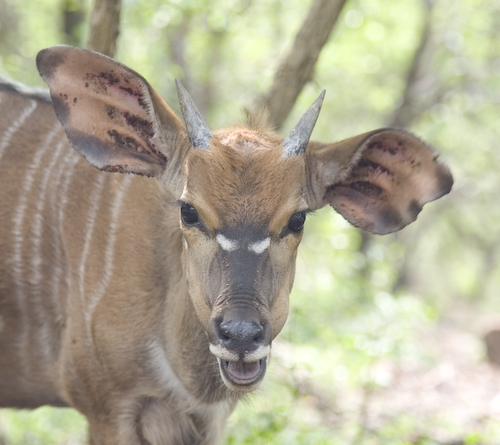
He wanted to know if I knew anything about the cookies the monkeys were eating, but I told him I didn't know where he could get some, and besides he didn't want to eat those empty calories. I'm not sure he bought it.
Monday Afternoon, September 11
This impala had an avian passenger, presumably they both benefit from the bird eating insects that also ride on the impala.
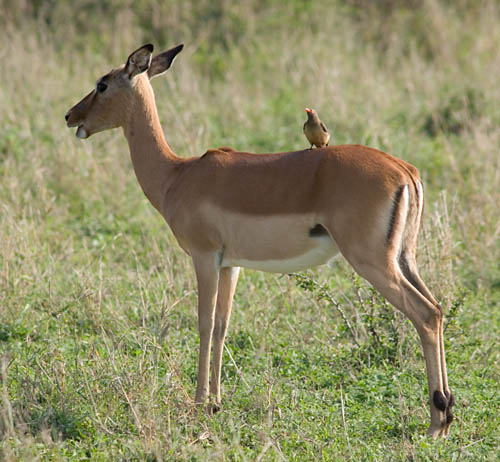
Wow, nice antlers!
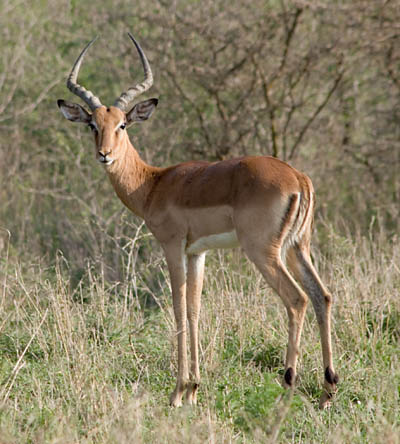
Warthogs spend their day snout-to-ground, ripping through the foliage with their sharp tusks. They are efficient little lawnmowers and quite cute in their own way.
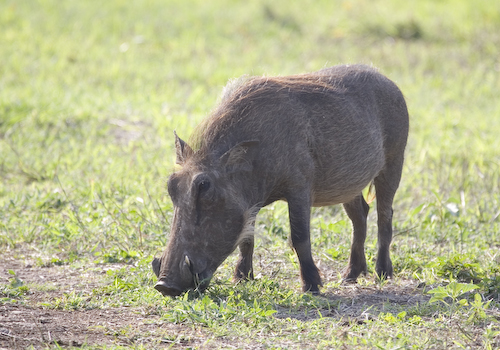
We saw zebra all the time, but we never got tired of them.
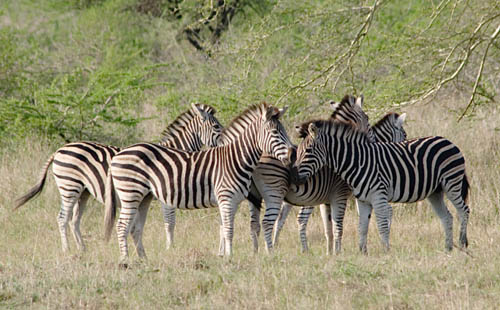
As we did in the morning, we saw more interesting birds in the afternoon. First up was this European glossy starling which is similar to the European starlings we see back home.
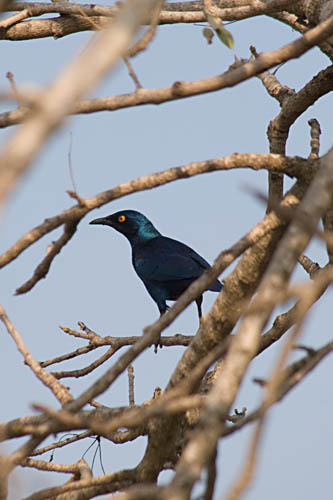
This is a woodland kingfisher.

Back down at the community pool, we saw a sandpiper
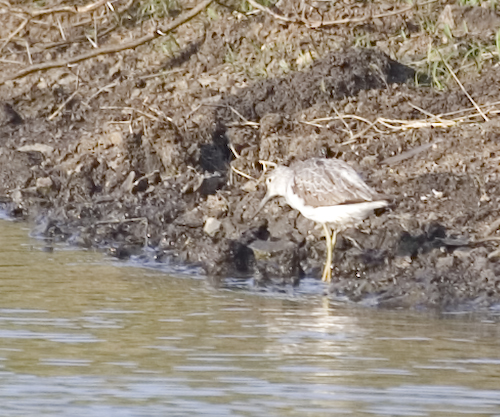
Being reptiles, crocodiles don't sweat so when they need to cool off they open their mouths and let evaporation cool them.
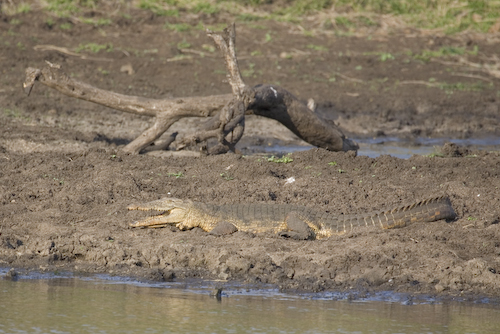
Of course it's hard for a crocodile to be subtle with its jaws wide open.
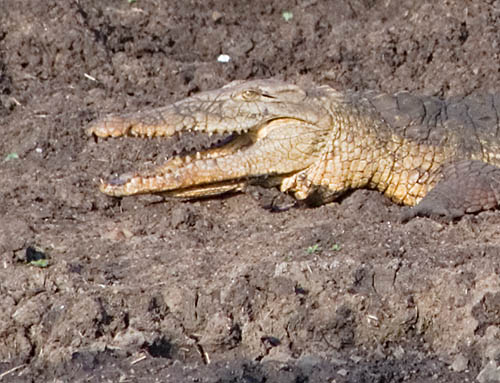
The hippo herd was very active on our last evening. The hippo on the far right was a youngster, smaller than the adults, boosting up on the back of a larger hippo to get a good look at us.
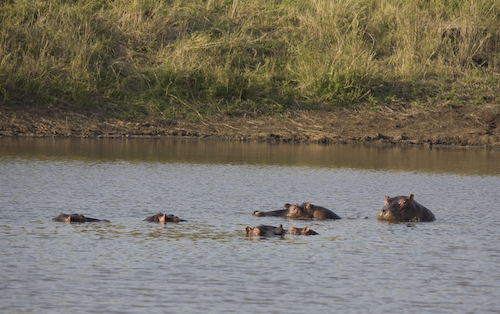
The same young hippo boosted his head and shoulders out of the water.
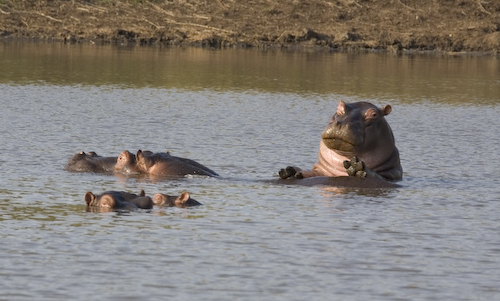
This fearsome hippo let loose with a huge yawn. Hippos kill more people than any other animal in Africa. It would not be good to surprise this beast traipsing through the brush at night.
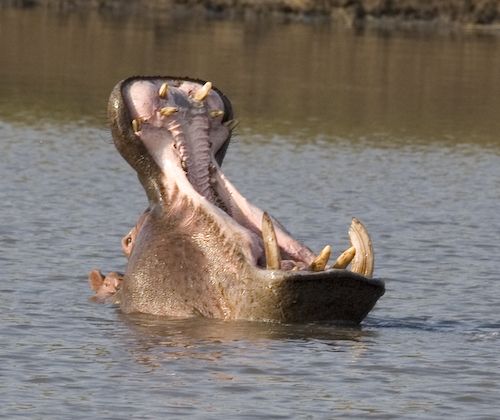
This awesome adult male Nyala is showing all of the characteristics: the magnificent antlers, the white bridge across the nose, the fluffy fur, the white camouflage stripes and the legs that look like knee-high socks.
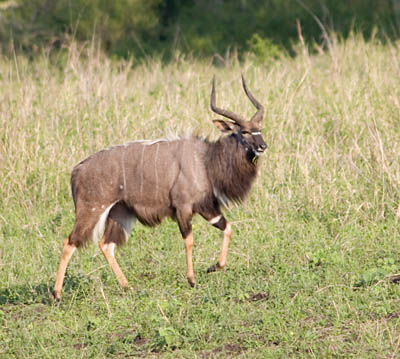
Shortly after seeing the wildebeests shown below, Marius received a radio call that one of the other groups had spotted a lion pride hunting near the fence between Zulu Nyala and Phinda. We raced over there just in time to see the last lion disappearing into the brush.
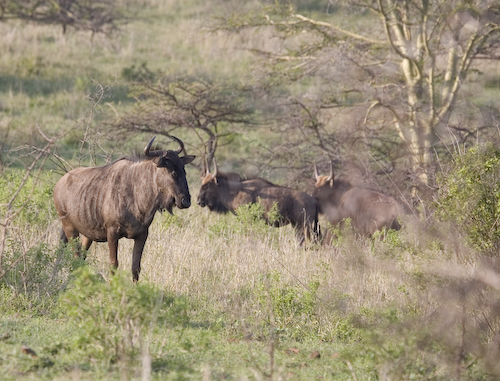
Near the end of the mad dash to see the lions, we cruised past a male rhino, so once the lion gig was up, we headed back for a closer look. He was completely unconcerned by the truck and took his time moving along the road munching grass. He was huge! If you look carefully, you can see that he's marking his territory with a stream angling down from his back side. Cathy was very pleased she caught this on camera.
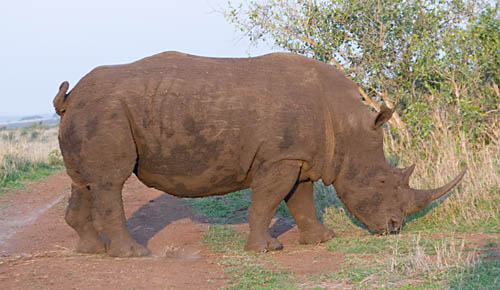
The giraffes were so fun and curious. As soon as we rolled up near them, they popped up from munching leaves to give us a look, then went back to munching.
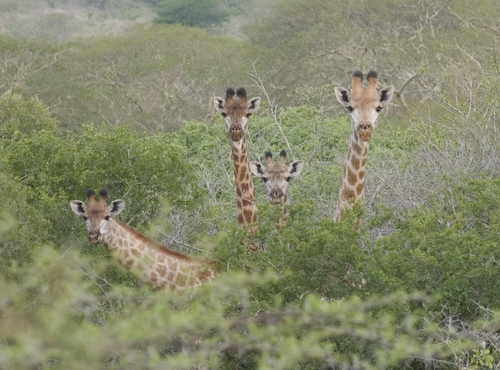
At the end of the ride, after the sun set and twilight was fading, Marius was scanning with the spotlight and noticed a pair of eyes in a field (the fake runway used in an obscure movie) and went four-wheeling into the grass to get a closer look. Tom was riding shotgun and was sure Marius had just taken us off-roading to look at a rabbit, but it was a steenbuck, a pygmy antelope. It was the cutest little thing, an antelope the size of a rabbit. Various sources claim they grow to a height of 17 inches and weigh up to 30 lbs, but this one looked much smaller, maybe a juvenile. As adorable as they are, the males are fierce and will fight to the death with their tiny little spike antlers.
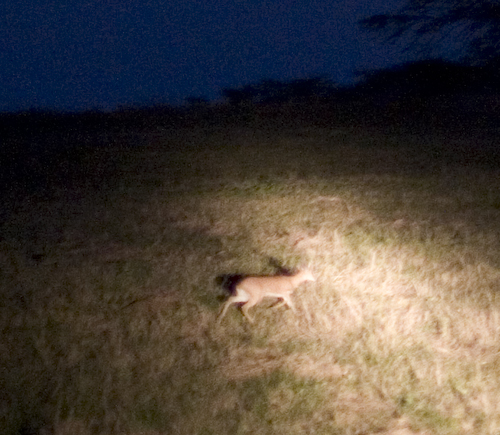
All photos ©2006 Tom and Cathy Saxton. All rights reserved.
|
©1996-2025 Tom and Cathy Saxton. You may not copy or reproduce any content from this site without our consent.